We may receive a commission when you use our affiliate links. However, this does not impact our recommendations.
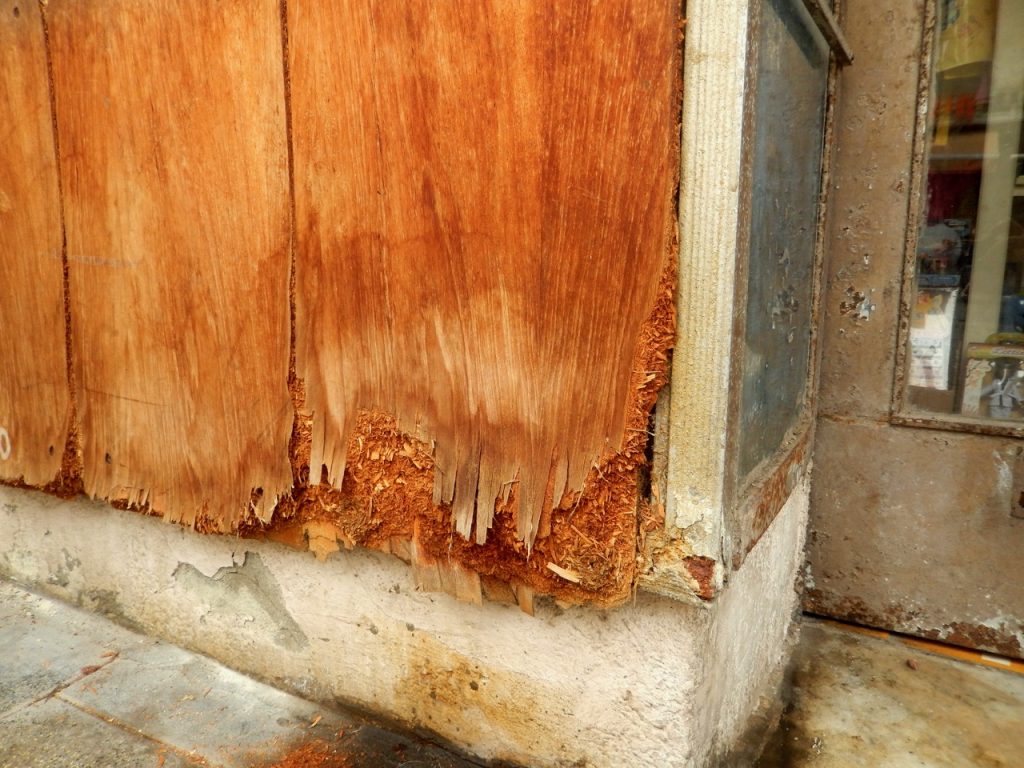
I believe that there is value and potential in almost all types of solid reclaimed wood. Whether it is solid wood furniture parts, post and beams from a demolished factory, or dismantled boards from a pallet or a shipping crate – it is all worthy of saving. Solid wood reclaims, even after years of being left out in the sun, rained on, and covered with snow, is still a viable material to work with. It might become warped, checked, and most likely show the hallmarks of weathering, but with some time (to let it dry) and little effort with the sander, jointer and planer, one can harvest enough core wood from it for a variety of projects.
However this is not the case with most industrial wood materials such as MDF and particle boards. This man-made material does not behave like natural wood. Unlike solid wood which can absorb water, swell, and then release the water back to the environment and contract, an MDF or particle board will swell, but will not shrink back after the water has evaporated. With every cycle of wetness and dryness these compressed wood-fibers and glue boards will continue to deform and eventually disintegrate. Plywood is a bit more resilient to water than MDF, but it too will “leaven” after some time. Only Marine Plywood, which is made from special plies of wood and water-resistant wood, will not deform in the presence of water.
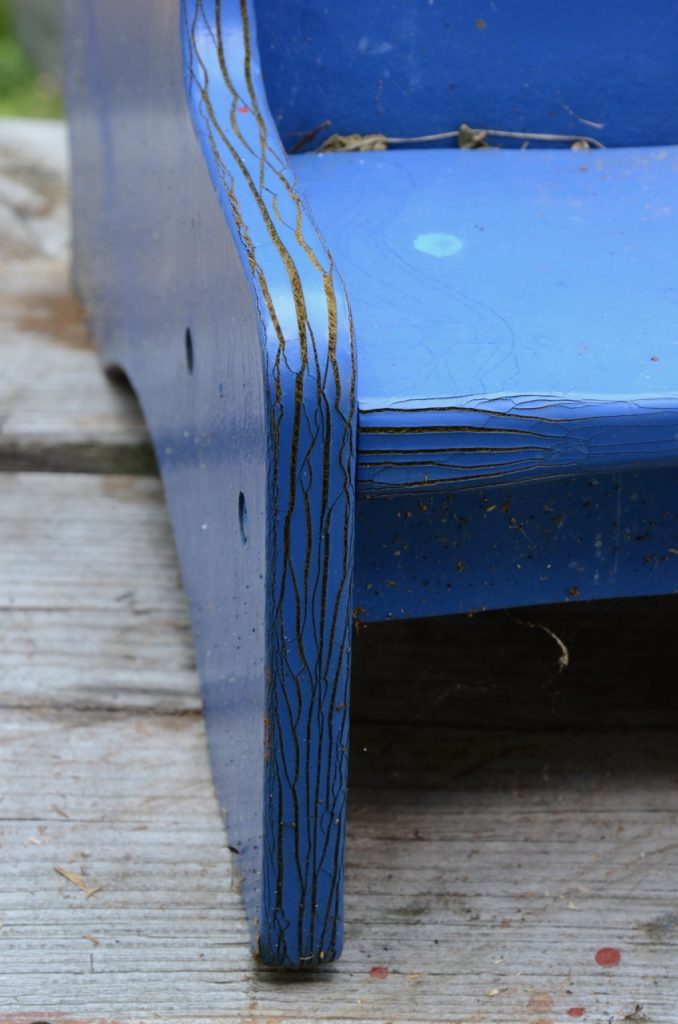
In this picture you can see the evidence of water damage to a stool built from painted MDF parts.
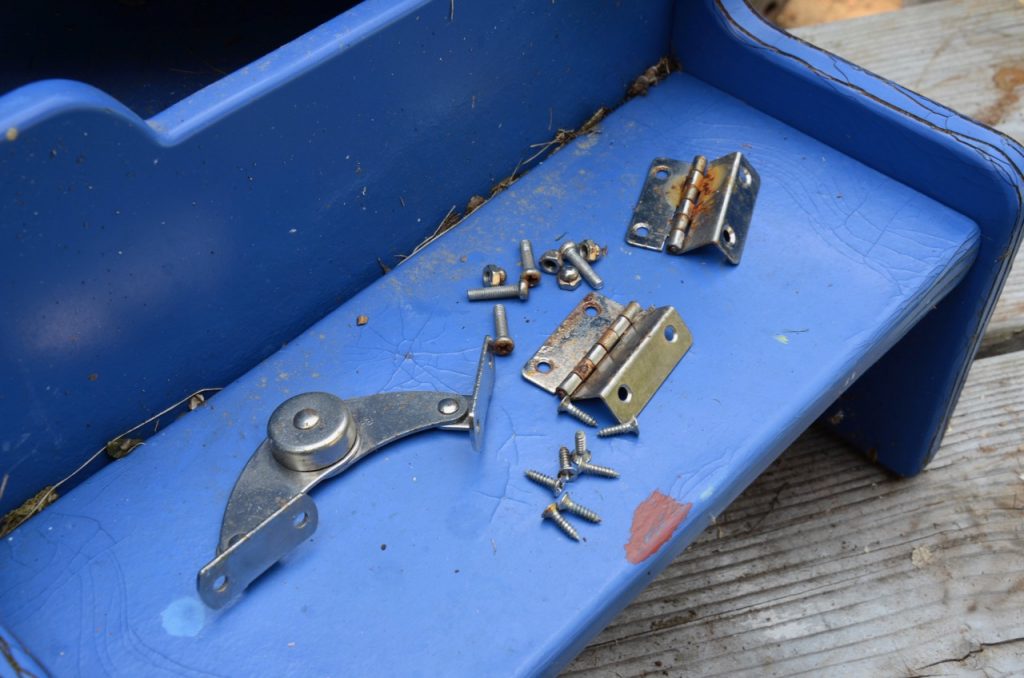
I often say to myself, If you can’t reclaim the “wood” at least save the hardware.

The maker of this odd cladded wall built under a store’s front window used particle boards covered with veneer — obviously the wrong choice for an outdoor material. Luckily, he or she ran out of particle boards and used one board of real wood just as the job was ready to be completed. Check the pictures below to see how the real wood board was hardly affected by the elements while its neighboring boards are almost completely disintegrated.

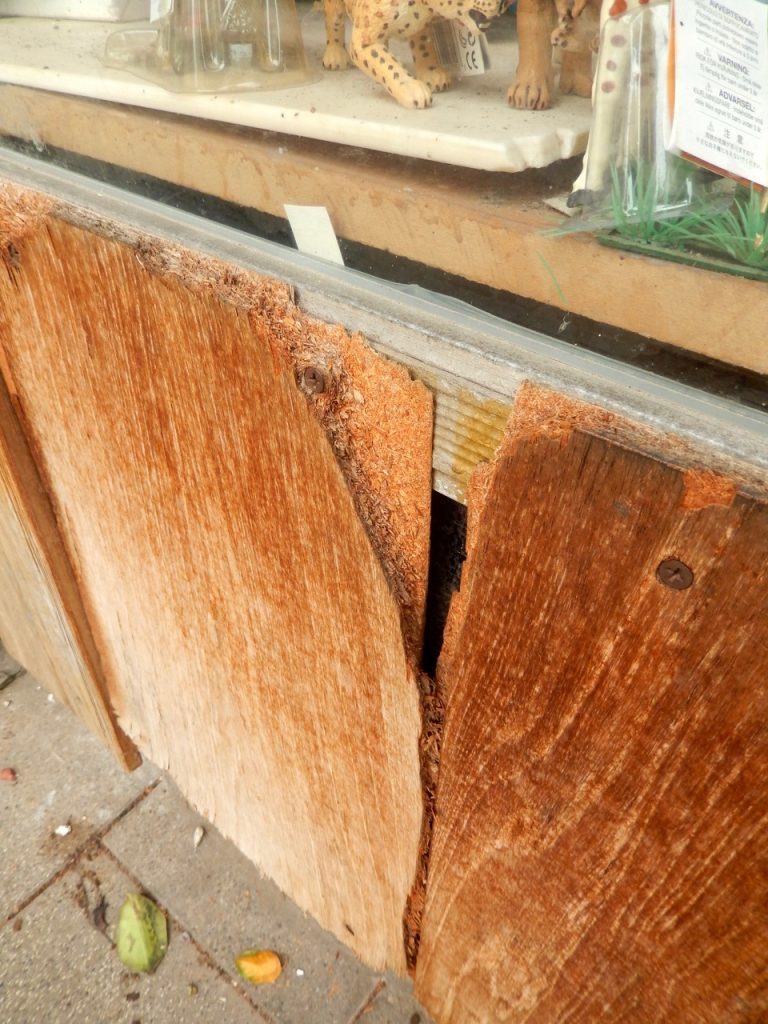
Particle boards covered with veneer is a bad material choice for exterior walls or for cabinetry in moist or wet environments such as the bathroom.
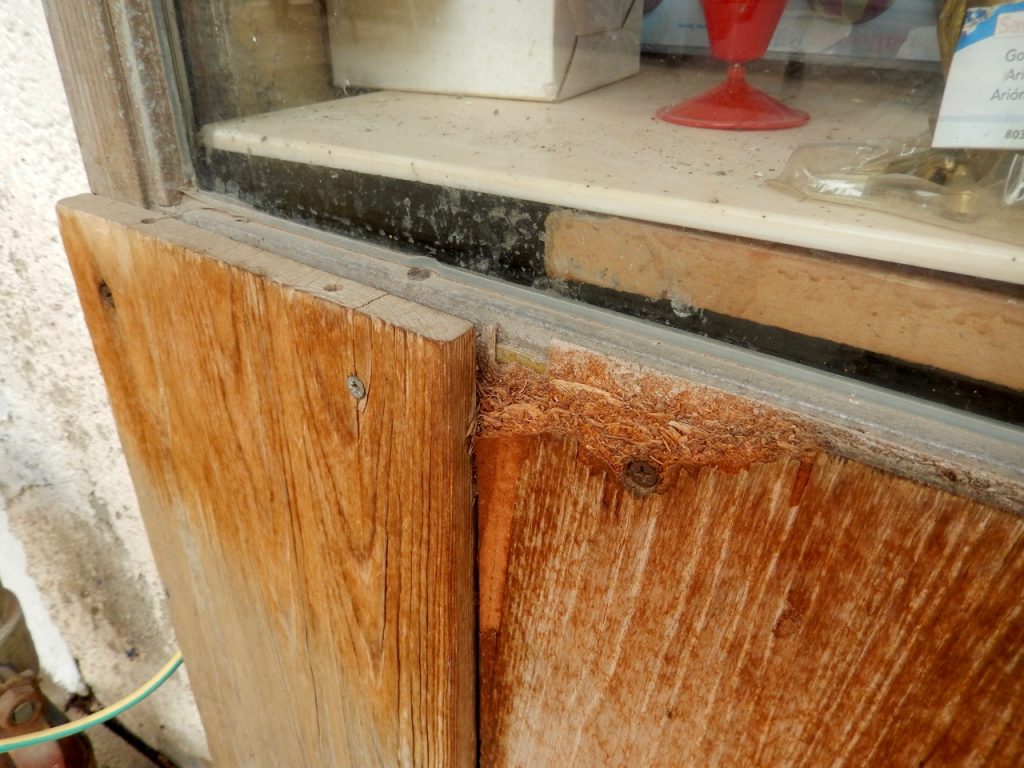
The board on the left is solid wood, while the one on the right is particle board.
Working Reclaimed Wood guides you through the entire process of finding, using and finishing reclaimed wood with case studies, projects and makers’ stories. From knowing different types of wood you’ll encounter to finding good sources for material and gaining the inspiration you need to create, it’s all here!
Here are some supplies and tools we find essential in our everyday work around the shop. We may receive a commission from sales referred by our links; however, we have carefully selected these products for their usefulness and quality.










If you can get to these materials _quickly_, they may be worth reclaiming for applications where they’re appropriate. I’ve seen large sheets of MDF go out for trash pickup in the form of desks, for example; if you can get to them before they get rained on they could still be worth reusing.
I have a jig which started as a piece of MDF on which a photo had been printed; didn’t think the photo was interesting enough to save but the MDF was still usable.
I have some play that was construction material. Hardly furniture grade, but adequate for storage containers.
By all means reject anything too damaged to be useful … But I would hesitate to dismiss an entire category before looking at it.
And yes, sometimes the hardware is worth grabbing even if the rest isn’t.
Hi There,
I agree that all man made materials can be – and should be – reclaimed as long as they were not mortally affected by the elements. The point I stressed in my blog entry is that there is no utility in trying to reclaim these materials if they had been exposed to detrimental levels of water and moisture. In other words: don’t waste your time on puffed up MDF. Unlike solid wood which might shrink back and become useful again, “Leavened” MDF has lost its structural integrity and deformed beyond repair. That is unless you find a purpose for it in a piece of art.
Best,
Yoav